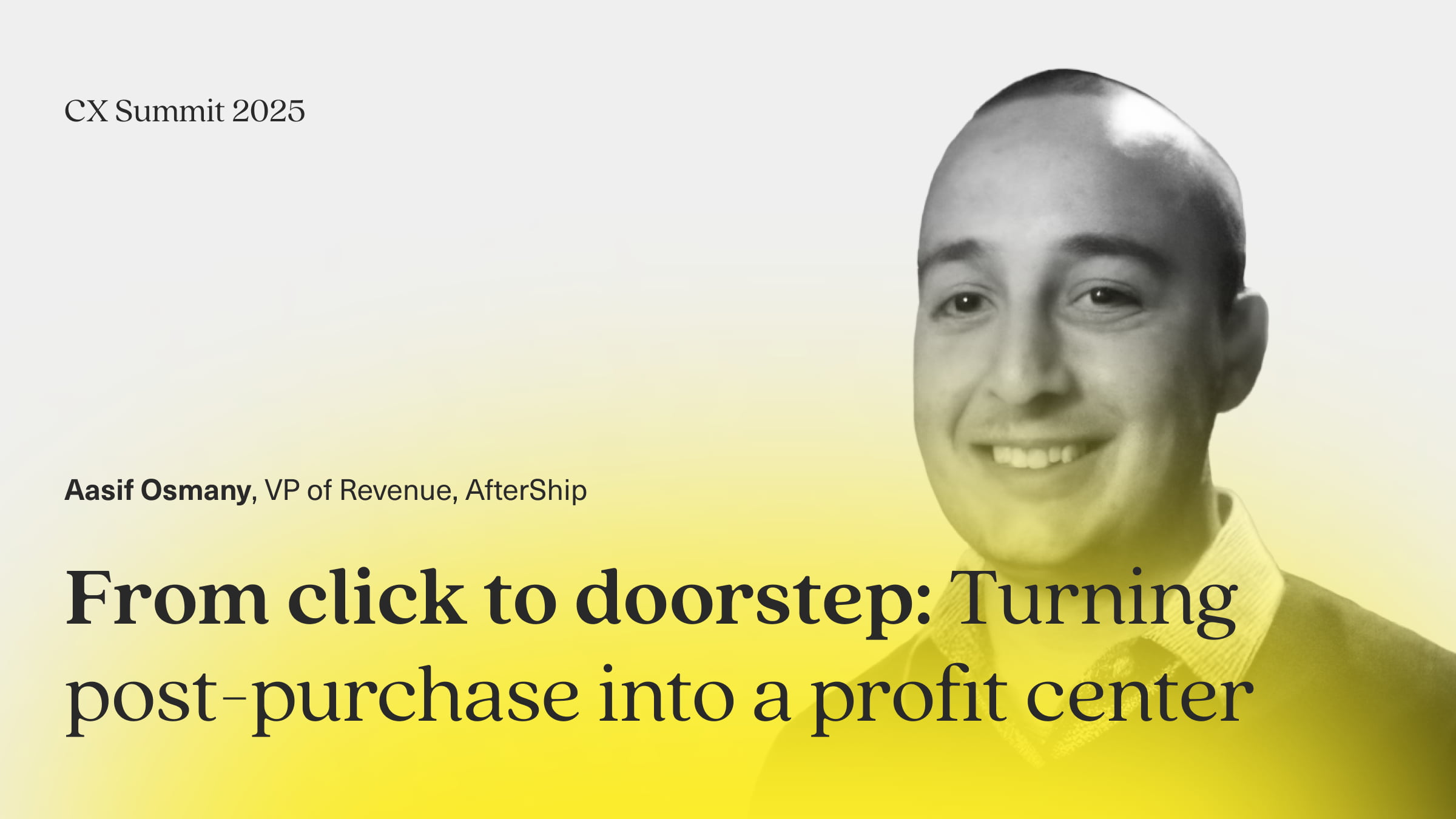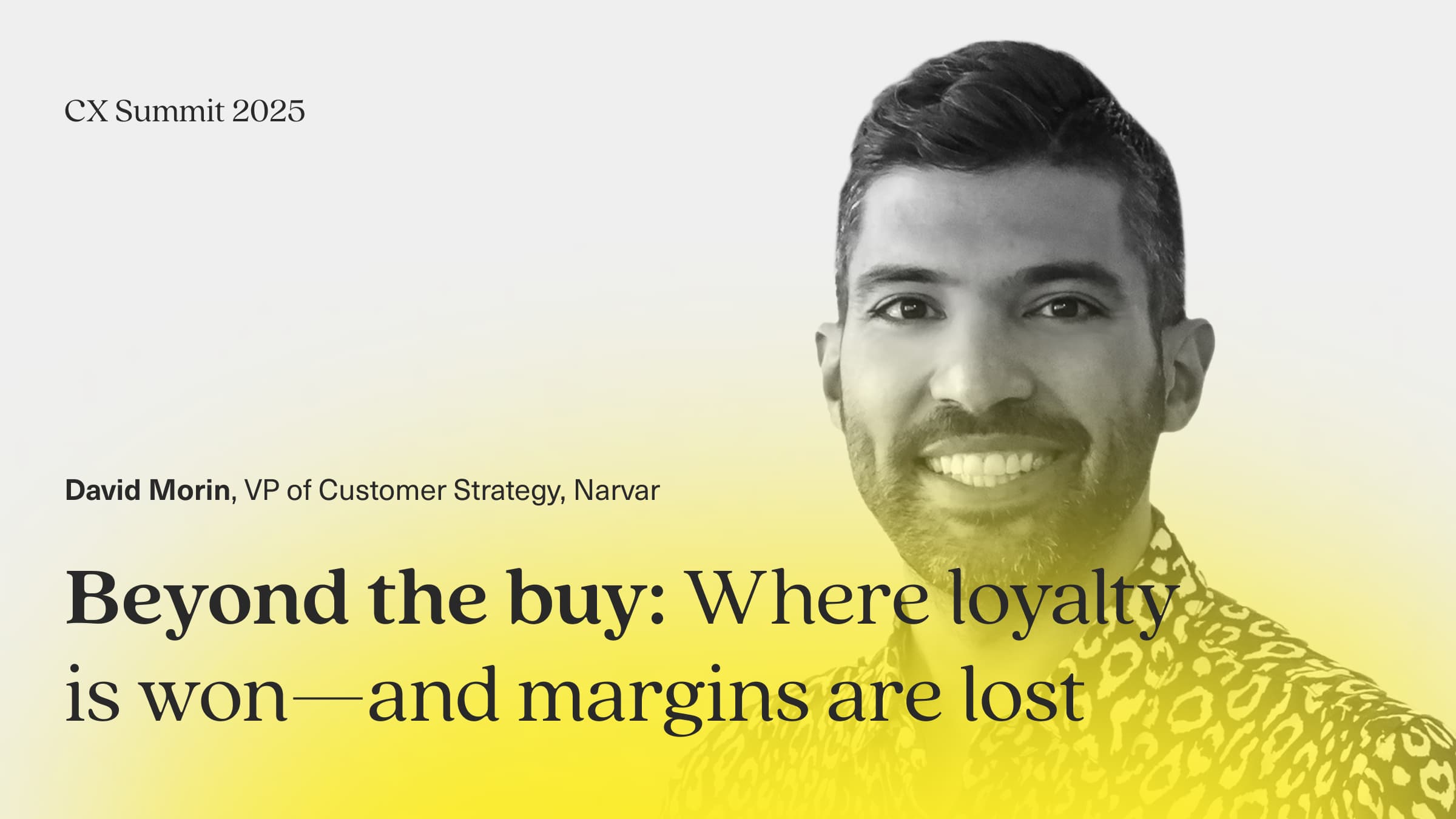Hamish McKay is young but already taking the CX world by storm at just 23 years old. He built a Shopify app about three years ago after working brand-side for MrBeast. He noticed that around 20% of our support tickets were customers wanting to make changes to their orders. Everyone said post-purchase order edits were impossible, but Order Editing decided to figure it out. Now the team supports over 1,600 merchants—including 300+ on Shopify Plus—providing self-service order editing for customers.
Hamish chatted with Gabe Larsen at the CX Summit about the power this can bring to brands. Dig in to the insights!
This interview has been edited for clarity.
Gabe: Why do you think the post-purchase experience has traditionally been overlooked? Or maybe not overlooked, but definitely underdeveloped?
Hamish: It has been locked away, honestly. When we started building the product, everyone said, “You cannot change an order after purchase—it is already passed to the ERP or warehouse system.” That belief was hardwired into ecommerce for the past 20 years.
Some areas of post-purchase, like returns, have had innovation. But for edits, nobody had cracked that open. Fortunately for us, nobody had broken down those walls yet, so we were first to do it. But I get why—it sounds impossible. Every CTO and systems architect would just shut the idea down.
Gabe: So how did you crack it? Without getting too technical, how did you figure out what everyone said was impossible?
Hamish: We created a new layer—a window of time between Shopify and those downstream systems. We delay the order’s sync to the ERP or WMS for a set period—say 30 or 60 minutes. During that grace period, because the order still lives in Shopify, customers or agents can make edits, add products, change addresses—whatever they need. It buys just enough time to improve the experience without disrupting fulfillment.
Gabe: That makes a lot of sense. Smart idea. You have now been on both sides—brand-side and building software. From your past experience managing post-purchase CX, what were some other pain points beyond order editing?
Hamish: It depends on the brand’s scale. But once your CX team grows—say 10+ agents—the biggest challenge becomes quality control. How do you review 10,000 or 50,000 tickets a month and ensure they are handled well?
Then you have customers expecting lightning-fast responses. They want their order shipped immediately, and if there is an issue—like an address change—they expect real-time resolution. It is a high-pressure environment. From the CX leader’s perspective, your priorities are having a great team you trust, and minimizing ticket volume as much as possible.
Gabe: Makes sense. You are now focused on order editing specifically—what kind of impact are you seeing from brands using the tool? CSAT improvements? Fewer tickets?
Hamish: It hits all levels. For customers, we see hundreds of Trustpilot reviews where people specifically mention the ability to edit their order and give five-star feedback. Even though we do not collect CSAT—since there is no support ticket involved—we know it is working based on those reviews.
Agents benefit because they have more time to focus on complex tickets. Managers love it because they can tell their CEO they reduced ticket volume by 15% and do not need to hire more agents.
On the business side, we also help drive incremental revenue. Since we control that grace window, we can monetize it. When a customer edits an address, we can offer 10% off socks or other upsells in the sidebar—just like checkout. It is not pushy; it is contextual and timely.
Gabe: That is brilliant. Any other creative ways brands are using that window? Promotions, upsells, or other smart touches?
Hamish: Absolutely. One of the best tactics is sending a follow-up email 10–30 minutes after the purchase, during that grace window. It might say, “Hey, it’s the warehouse assistant—we are packing your order and there’s room in the box. Want to add Product X for 20% off?”
It is contextual, well-timed, and effective. Because there is no extra shipping fee and the order has not gone out yet, it just works. It is one of the most clever ways we have seen brands use this moment.
Gabe: Love that. Tactical and practical. You have done a great job shedding light on this part of the journey—one that not enough brands are thinking about. As we wrap, we know many CX leaders are feeling overwhelmed. Budgets are tight, and there is a lot of pressure to do more with less. Any advice you would leave them with?
Hamish: The best way to get more out of your CX team is to become a better manager—or help your team become better versions of themselves. You do not need another tool to change your life.
If you focus on personal development—reading, coaching, learning leadership theory—you will start to notice big shifts. A team that is 50% better at communication and emotional intelligence will deliver a better customer experience, work harder, and make fewer mistakes.
This stuff sounds vague, but it really works. I remind myself daily to ask, “How could I have handled that better?” I do not always get it right, but if I improve 25% of the time, I will be a significantly better leader by next year. And that is the most valuable investment you can make.
Gabe: I love that perspective. In a world obsessed with automation, it is refreshing to hear someone say the human side still matters. Optimizing post-purchase starts and ends with people—whether agents, customers, or leaders.
Closing thoughts
Jess shows us that customer experience leaders must rethink CX as more than support: it’s a strategic growth driver. Retention starts with the first touchpoint, not after purchase, and thrives on personalization, relationship-building, and thoughtful segmentation. Instead of relying on discounts, brands should focus on understanding customer behavior and using CX insights to improve the entire journey. Even with tight budgets, tagging support interactions and tracking impact on churn and repeat purchases can turn CX into a data-backed, revenue-generating powerhouse.
Looking to supercharge your brand’s customer support? Check out our guide on consolidating your CX tech stack or explore Kustomer today!




